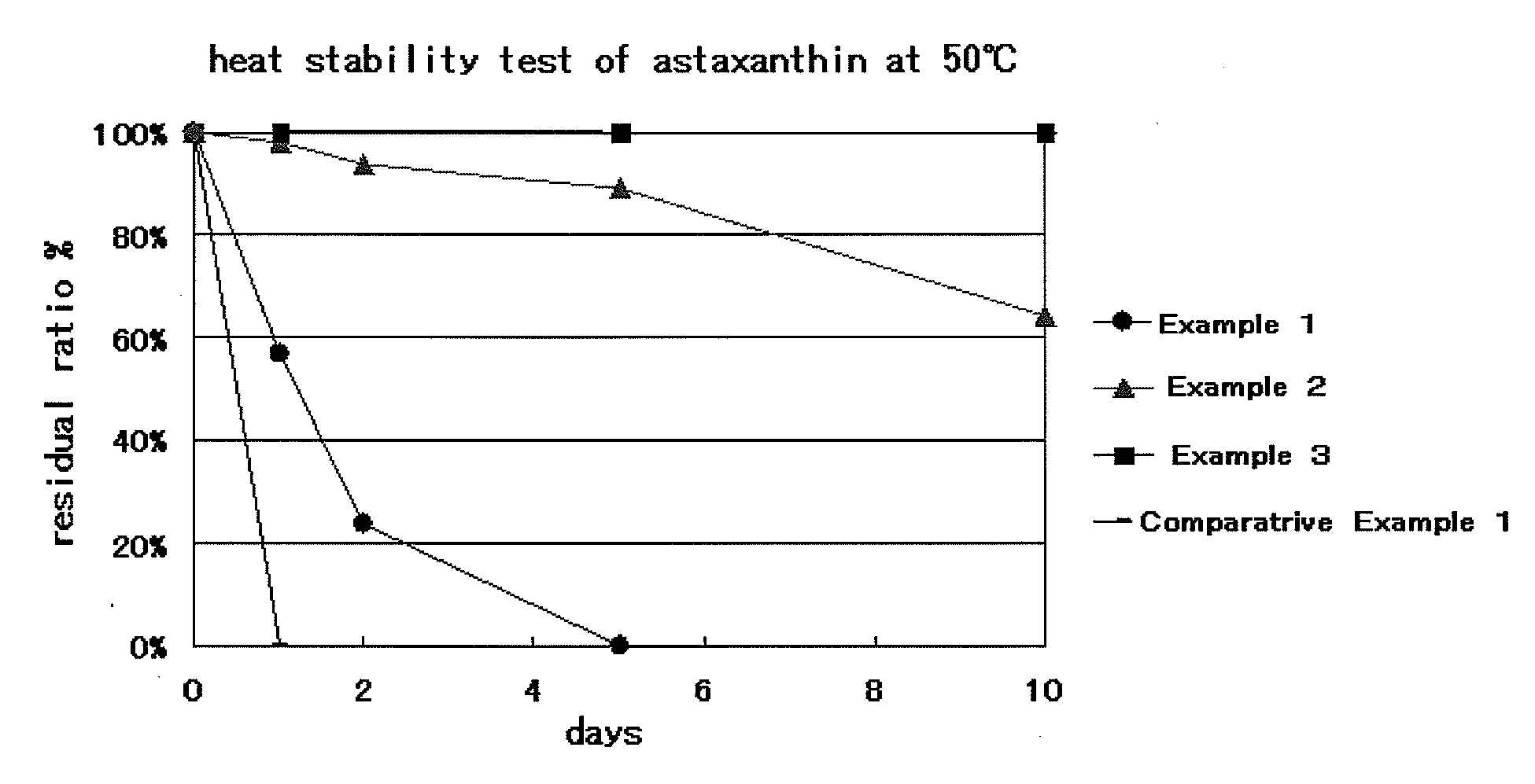Transpulmonary composition
a technology of pulmonary composition and pulmonary tube, which is applied in the direction of aerosol delivery, spray delivery, metabolic disorder, etc., can solve the problems of low intestinal absorption, weak biological protection function high risk of administration into the lung, so as to achieve low stability, high lung absorption effect, and stable administration
- Summary
- Abstract
- Description
- Claims
- Application Information
AI Technical Summary
Benefits of technology
Problems solved by technology
Method used
Image
Examples
example 1
[0041]Milk-derived casein (15 mg; Wako Pure Chemical Industries, Ltd.) was mixed with phosphate buffer (pH 9, 1.5 mL). Astaxanthin (9 mg: Wako Pure Chemical Industries, Ltd.) was dissolved in ethanol (1 mL). The two different solutions were mixed together. After ethanol was evaporated, the resulting liquid mixture (1 mL) was injected into phosphate buffer water (pH 5, 10 mL) with the use of microsyringe at an external temperature of 40° C. during stirring at 800 rpm. Thus, casein nanoparticles were obtained. The average particle size of the above particles was measured with a “Microtrac” light scattering photometer (NIKKISO Co., Ltd.) and found to be 274 nm.
example 2
[0042]Milk-derived casein (15 mg; Wako Pure Chemical Industries, Ltd.) was mixed with phosphate buffer (pH 9, 1.5 mL). Astaxanthin (9 mg: Wako Pure Chemical Industries, Ltd.) and tocopherol (2.75 mg) were dissolved in ethanol (1 mL). The two different solutions were mixed together. After ethanol was evaporated, the resulting liquid mixture (1 mL) was injected into phosphate buffer water (pH 5, 10 mL) with the use of microsyringe at an external temperature of 40° C. during stirring at 800 rpm. Thus, casein nanoparticles were obtained. The average particle size of the above particles was measured with a “Microtrac” light scattering photometer (NIKKISO Co., Ltd.) and found to be 293 nm.
example 3
[0043]Milk-derived casein (15 mg; Wako Pure Chemical Industries, Ltd.) was mixed with phosphate buffer (pH 9, 1.5 mL). Astaxanthin (9 mg: Wako Pure Chemical Industries, Ltd.) and tocopherol (2.75 mg) were dissolved in ethanol (1 mL). The two different solutions were mixed together. After ethanol was evaporated, the resulting liquid mixture (1 mL) was injected into phosphate buffer water (pH 5, 10 mL) with the use of microsyringe at an external temperature of 40° C. during stirring at 800 rpm. Thus, casein nanoparticles were obtained. The average particle size of the above particles was measured with a “Microtrac” light scattering photometer (NIKKISO Co., Ltd.) and found to be 293 nm. Ascorbic acid (100 mg) was added to this dispersion liquid.
PUM
| Property | Measurement | Unit |
|---|---|---|
| particle size | aaaaa | aaaaa |
| particle diameters | aaaaa | aaaaa |
| particle size | aaaaa | aaaaa |
Abstract
Description
Claims
Application Information
 Login to View More
Login to View More - R&D
- Intellectual Property
- Life Sciences
- Materials
- Tech Scout
- Unparalleled Data Quality
- Higher Quality Content
- 60% Fewer Hallucinations
Browse by: Latest US Patents, China's latest patents, Technical Efficacy Thesaurus, Application Domain, Technology Topic, Popular Technical Reports.
© 2025 PatSnap. All rights reserved.Legal|Privacy policy|Modern Slavery Act Transparency Statement|Sitemap|About US| Contact US: help@patsnap.com


